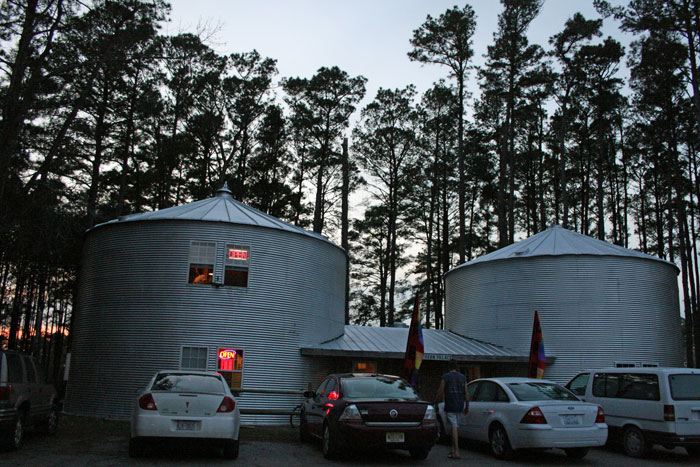 Budding tree overlooking marshland on the southern side of the "Indian Ditch" between Turnagain Bay and Long Bay(Click on image for full size)
Budding tree overlooking marshland on the southern side of the "Indian Ditch" between Turnagain Bay and Long Bay(Click on image for full size)Spring continues to evince itself along the waterways of Down East NC... This shot was taken on the banks of a canal known to locals as "Indian Ditch."

This particular "Indian Ditch" runs about 1.25 miles through marshland between the heads of Turnagain Bay on the West and Long Bay on the East, a convenient shortcut to the other side of Piney Island
(home of the U.S. military's "BT-11" target range... as signs along the north bank of the ditch attest [see picture at right])The term "Indian Ditch," as far as I can tell, refers to irrigation and transportation canals built by Native Americans... I have found no authoritative information on the history of this particular ditch, but have found U.S. Govt. references to the "Indian Ditch" as comprising the southern border of the "BT-11" target range.
Native people did dig irrigation and communication ditches through marshlands in what is now NC...
The Waterman’s Song – Slavery and Freedom in Maritime North Carolina, David S. Cecelski, (2001, UNC Press, Chapel Hill), the author describes how African slaves were the primary inheritors of Native knowledge of local fisheries, waterways and techniques, and that English colonists and African slaves also inherited Native fishing and water infrastructure, including canals:
“Beginning with an English assault on the Chowaneoic in 1679 and ending with the Tuscarora War three decades later, colonists and their slaves also took over the maritime infrastructure created by the coastal Indians. They adopted marsh canals excavated by Coree boatmen, confiscated trails worn down by Tuscarora autumnal migrations to the fishing beaches, pulled their seines by former Chowaneoic fish camps, placed fish impoundments where Moratuck weirs had stood..."
(Cecelski, at p. 20)
If the ditch was indeed originally built by Native Americans, I have a feeling it has since been improved by the U.S. Army Corps of Engineers, seeing as how it is a good 5 feet deep and 80 feet wide for its entire 1.25 mile straight-line run through swampy marshland.
Trees grow along the ditch where the canal's dredgings have been deposited, forming dry land berms/dikes between the canal and the surrounding marshlands.
It is hard to imagine such an engineering feat using hand tools and stone-age technology, though I would readily believe that Native Americans built some sort of waterway communicating between these two bays to provide for canoes or other small fishing boats.
It would certainly make sense for area natives to want a shortcut from the Neuse River estuary to fisheries of Long Bay and West Bay, and, via another purported "Indian Ditch," all the way to the waterways now known as Core Sound.
Please, if you have any info on the history of this ditch, or know of some sources I could consult, please drop me a comment or e-mail.Here is a shot of the ditch, followed by a Google map showing its location:
 View Larger Map
View Larger Map[Steven has left a comment on The Dinghy Dock, linking to an 1884 U.S. Coast Survey map on the University of North Carolina "NC Maps" site which shows an "Old Canal" at the location of today's photographs:Thanks for the reference, Steven!... UNC's NC Maps on-line collection is news to me, and I am enjoying looking through all the maps... So far I have found an 1844 postal map showing a waterway passing between the Neuse River and Long Bay, again in the same place as the above "Indian Ditch.":
-30-



























